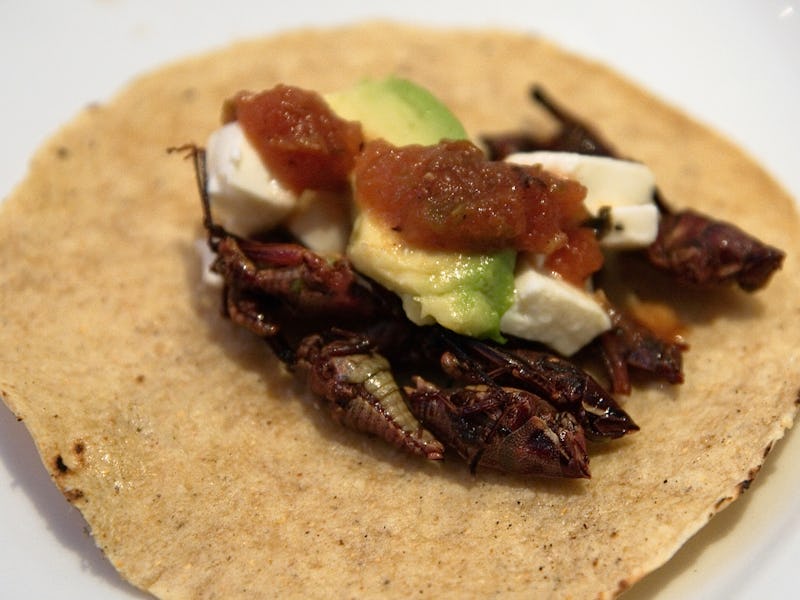The Next Big Protein, Oaxacan Chapulines Are Grasshoppers With Cheetos' Crunch
How chef Diego Galicia is turning a plague into a meal.

Diego Galicia doesn’t deal in deception. The chef and owner of San Antonio’s “progressive Mexican culinaria,” Mixtli, is fully aware that the easiest way to serve up gourmet bugs is to grind them down and sneak them into shakes and brownies, but where’s the fun — and future — in that? Galicia, inspired by ancient recipes drawn from his Mexican family, believes that insects will, whether we like it or not, become mankind’s major protein source. He’s just ahead of the game.
“In Mexico, insects have been eaten for hundreds of years,” Galicia tells Inverse. “We don’t have to sneak them into anything.”
Natives of Oaxaca, a state near the country’s southern border, have long allowed maguey worms (found at the bottom of bottles of mezcal), giant winged ants, and fly eggs, together with the native grasshoppers known as chapulines, to play the “main role in the movie,” as Galicia puts it. He thinks the chapulines in particular are delicious, with the “texture of a Cheeto” and the woodsy notes of oak and applewood. On the nights he can source them — he sneaks them into Texas after long drives from Mexico — he serves them up toasted, spiced, and sautéed, and sometimes sprinkled onto guacamole. Traditionally, they’re folded into tacos or served up like potato chips, seasoned with chile and lime. “They have a really good flavor,” he says. “You just have to get past the legs.”
But one does not just get past legs — especially not in the middle of a cow-hungry state that raised 11.7 million burger-bound cows last year. Galicia’s insect-based Oaxacan fare has a healthy following in San Antonio, but he knows that novelty alone isn’t going to turn foodie adventurers into converts. But maybe necessity will: As long as we continue to pump greenhouse gases and skew toward meat-heavy diets — and we will — production of beef, pork, and chicken will only continue to get more expensive and environmentally costly to farm. But we’ll need to get our protein somewhere. As it turns out, insects aren’t just cheap to produce — they’re also nutritious as hell. “There’s way more protein in a pound of grasshoppers than in a pound of beef,” Galicia explains, pointing to a recent United Nations report insisting bugs are — and will increasingly be — much more than just “famine foods.”
The American palate is pretty #basic, but it’s not impossible to wear down: Just look at kale, which has become a staple ingredient in Caesar salads to kimchi to chips, even though — let’s be real — it kind of tastes like dirt. The thought of snacking on chapulines will take some getting used to, but at least they taste good, along with being good for you. It’ll just take some time for the idea to settle. That’s why Galicia is starting now.
He’s one of many culinary optimists riding the first swell of the entomophagy wave. The legendary rapper Nas has invested in cricket-based energy bars, and insect growers like Next Millennium Farms are producing cricket-based flours that, as Inverse discovered, make for pretty damn good pastries. But Galicia is cooking, at least in part, to celebrate his rich, insect-eating heritage. Endeavoring to serve the native chapulines in anything but their original form would just be admitting there was something to hide.
“You have to understand, people around the world survive because of things like this,” he says. “Once you have that respect and you cross that line, everything changes in your head.”